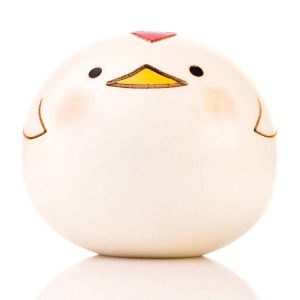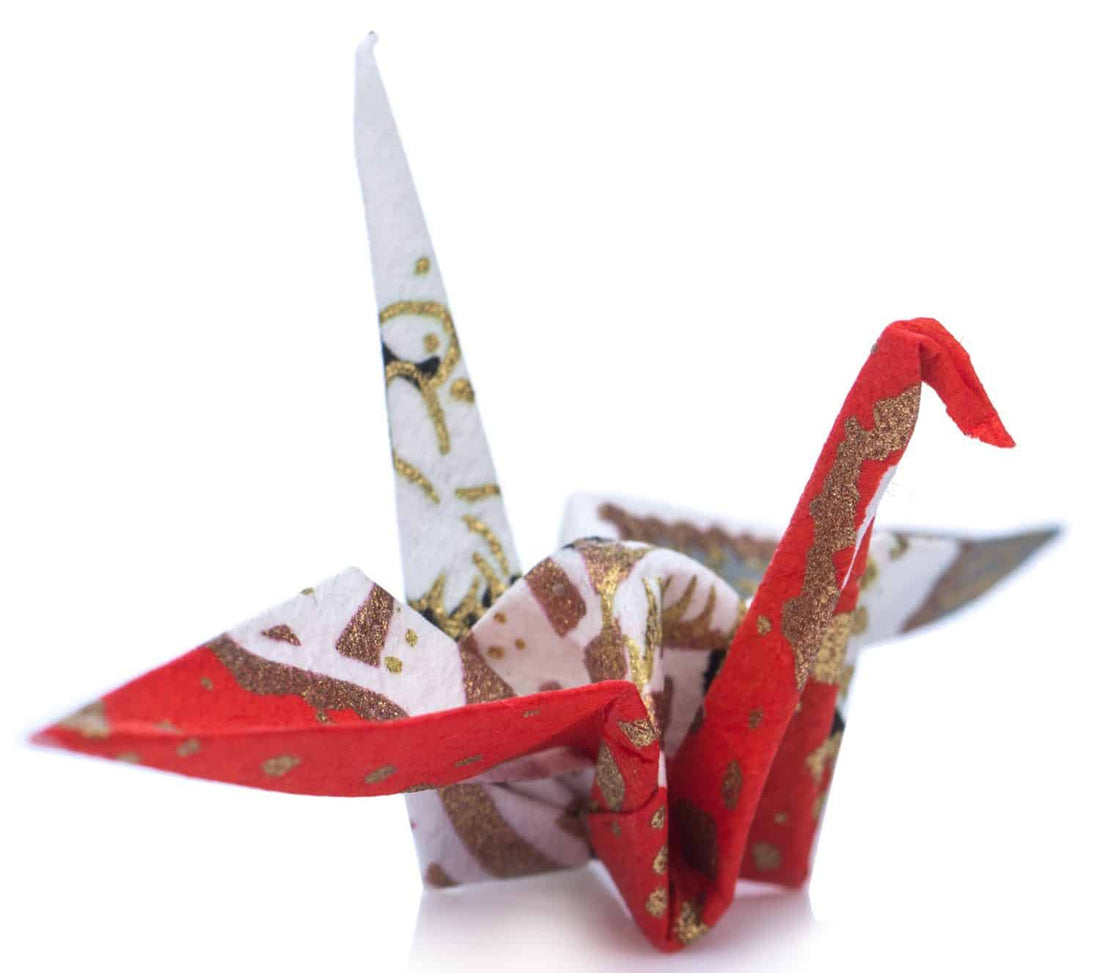In 2017, the Japanese welcomed in the year of the bird. Celebrated and revered throughout Japan, the bird is symbolic of longevity, luck, love and much more. Although there are several Japanese birds which play an integral part in both the country's cultural and religious life, this blog will explore three of the most prominent: the crane, the rooster and the owl.
The Crane-
Tsuru
Perhaps the most common figure shaped using origami, the crane, a bird believed to live for over 1000 years, is held in extremely high regard in Japan. The crane’s relationship with good fortune and longevity is highlighted in several ways: in Japanese art, the crane is frequently featured alongside the
Seven Lucky Gods of Japan (
Shichifukujin); at weddings, it is customary for someone, usually the father of the bride, to make 1000 paper ‘love birds’ as a wedding gift to wish the couple a long and happy marriage; and in healing , the figure of the crane is thought to promote good health, happiness and hope to those suffering from ailments.
If you would like to learn how to create an origami crane, pick up some
authentic origami paper, check out these
instructions and get folding!
 The Rooster
The Rooster-
Niwatori
In ancient Japanese myth, the rooster was said to have tempted the sun goddess, Amaterasu, out of her cavern, bringing light back into the sky after a period of ultimate darkness. In recognition of the rooster’s bravery during this time of despair, this Japanese bird is symbolic of courage throughout Japan. Due to their relation with the goddess Amaterasu, roosters are regarded as sacred birds, permitted to roam freely around
Shinto temples.
At
The Japanese Shop, our
year of the bird kokeshi doll is designed to look like a rooster, one of Japan’s most celebrated birds. If you know someone born in the year of the bird, why not treat them to this cute and thoughtful gift?
 The Owl
The Owl-
Fukurō
While travelling through Japan you will undoubtedly recognise the importance of owls in day-to-day Japanese life. Thought to bring good luck and protection from suffering, the people of Japan are commonly found carrying around owl charms. These charms come in all shapes, sizes, materials and colours and each is thought to symbolise a different facet of luck. For example, this ceramic, pink
Japanese lucky owl brings love while this
miniature crystal Japanese lucky owl helps to safeguard your money.
Owls are such a prominent part of Japanese culture that in Tokyo Akihabara, there is an
owl café where people come to relax and interact with owls.

 The Rooster- Niwatori
In ancient Japanese myth, the rooster was said to have tempted the sun goddess, Amaterasu, out of her cavern, bringing light back into the sky after a period of ultimate darkness. In recognition of the rooster’s bravery during this time of despair, this Japanese bird is symbolic of courage throughout Japan. Due to their relation with the goddess Amaterasu, roosters are regarded as sacred birds, permitted to roam freely around Shinto temples.
At The Japanese Shop, our year of the bird kokeshi doll is designed to look like a rooster, one of Japan’s most celebrated birds. If you know someone born in the year of the bird, why not treat them to this cute and thoughtful gift?
The Rooster- Niwatori
In ancient Japanese myth, the rooster was said to have tempted the sun goddess, Amaterasu, out of her cavern, bringing light back into the sky after a period of ultimate darkness. In recognition of the rooster’s bravery during this time of despair, this Japanese bird is symbolic of courage throughout Japan. Due to their relation with the goddess Amaterasu, roosters are regarded as sacred birds, permitted to roam freely around Shinto temples.
At The Japanese Shop, our year of the bird kokeshi doll is designed to look like a rooster, one of Japan’s most celebrated birds. If you know someone born in the year of the bird, why not treat them to this cute and thoughtful gift?
 The Owl- Fukurō
While travelling through Japan you will undoubtedly recognise the importance of owls in day-to-day Japanese life. Thought to bring good luck and protection from suffering, the people of Japan are commonly found carrying around owl charms. These charms come in all shapes, sizes, materials and colours and each is thought to symbolise a different facet of luck. For example, this ceramic, pink Japanese lucky owl brings love while this miniature crystal Japanese lucky owl helps to safeguard your money.
Owls are such a prominent part of Japanese culture that in Tokyo Akihabara, there is an owl café where people come to relax and interact with owls.
The Owl- Fukurō
While travelling through Japan you will undoubtedly recognise the importance of owls in day-to-day Japanese life. Thought to bring good luck and protection from suffering, the people of Japan are commonly found carrying around owl charms. These charms come in all shapes, sizes, materials and colours and each is thought to symbolise a different facet of luck. For example, this ceramic, pink Japanese lucky owl brings love while this miniature crystal Japanese lucky owl helps to safeguard your money.
Owls are such a prominent part of Japanese culture that in Tokyo Akihabara, there is an owl café where people come to relax and interact with owls.


